README.md
81 lines
| 3.3 KiB
| text/x-minidsrc
|
MarkdownLexer
| r15 | ####PolyPartition | |||
| PolyPartition is a lightweight C++ library for polygon partition and triangulation. PolyPartition implements multiple algorithms for both convex partitioning and triangulation. Different algorithms produce different quality of results (and their complexity varies accordingly). The implemented methods/algorithms with their advantages and disadvantages are outlined below. | ||||
| For input parameters and return values see method declarations in `polypartition.h`. All methods require that the input polygons are not self-intersecting, and are defined in the correct vertex order (conter-clockwise for non-holes, clockwise for holes). Polygon vertices can easily be ordered correctly by calling `TPPLPoly::SetOrientation` method. | ||||
| ####Triangulation by ear clipping | ||||
| Method: `TPPLPartition::Triangulate_EC` | ||||
| Time/Space complexity: `O(n^2)/O(n)` | ||||
| Supports holes: Yes, by calling `TPPLPartition::RemoveHoles` | ||||
| Quality of solution: Satisfactory in most cases | ||||
| Example: | ||||
| 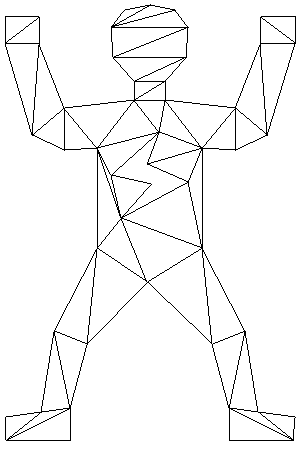 | ||||
| ####Optimal triangulation in terms of edge length using dynamic programming algorithm | ||||
| Method: `TPPLPartition::Triangulate_OPT` | ||||
| Time/Space complexity: `O(n^3)/O(n^2)` | ||||
| Supports holes: No. You could call `TPPLPartition::RemoveHoles` prior to calling `TPPLPartition::Triangulate_OPT`, but the solution would no longer be optimal, thus defeating the purpose | ||||
| Quality of solution: Optimal in terms of minimal edge length | ||||
| Example: | ||||
| 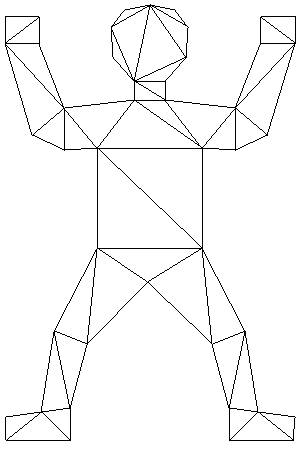 | ||||
| ####Triangulation by partition into monotone polygons | ||||
| Method: `TPPLPartition::Triangulate_MONO` | ||||
| Time/Space complexity: `O(n*log(n))/O(n)` | ||||
| Supports holes: Yes, by design | ||||
| Quality of solution: Poor. Many thin triangles are created in most cases | ||||
| Example: | ||||
| 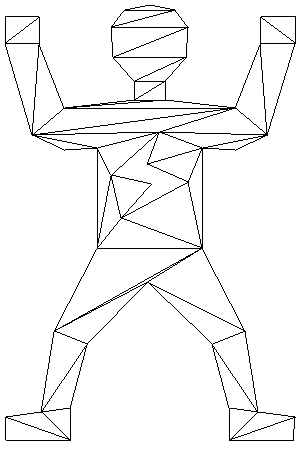 | ||||
| ####Convex partition using Hertel-Mehlhorn algorithm | ||||
| Method: `TPPLPartition::ConvexPartition_HM` | ||||
| Time/Space complexity: `O(n^2)/O(n)` | ||||
| Supports holes: Yes, by calling `TPPLPartition::RemoveHoles` | ||||
| Quality of solution: At most four times the minimum number of convex polygons is created. However, in practice it works much better than that and often gives optimal partition. | ||||
| Example: | ||||
| 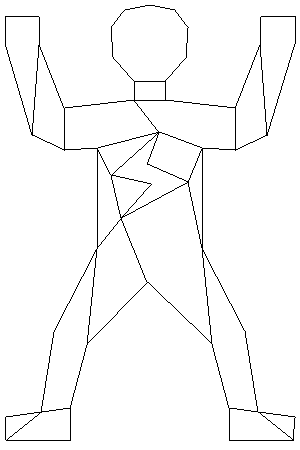 | ||||
| ####Optimal convex partition using dynamic programming algorithm by Keil and Snoeyink | ||||
| Method: `TPPLPartition::ConvexPartition_OPT` | ||||
| Time/Space complexity: `O(n^3)/O(n^3)` | ||||
| Supports holes: No. You could call `TPPLPartition::RemoveHoles` prior to calling `TPPLPartition::Triangulate_OPT`, but the solution would no longer be optimal, thus defeating the purpose | ||||
| Quality of solution: Optimal. A minimum number of convex polygons is produced | ||||
| Example: | ||||
| 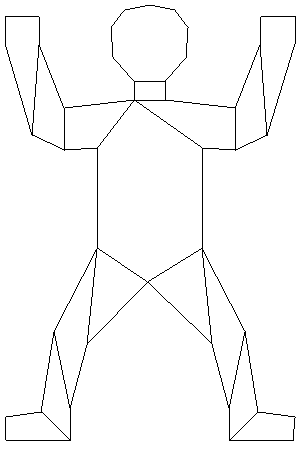 | ||||
